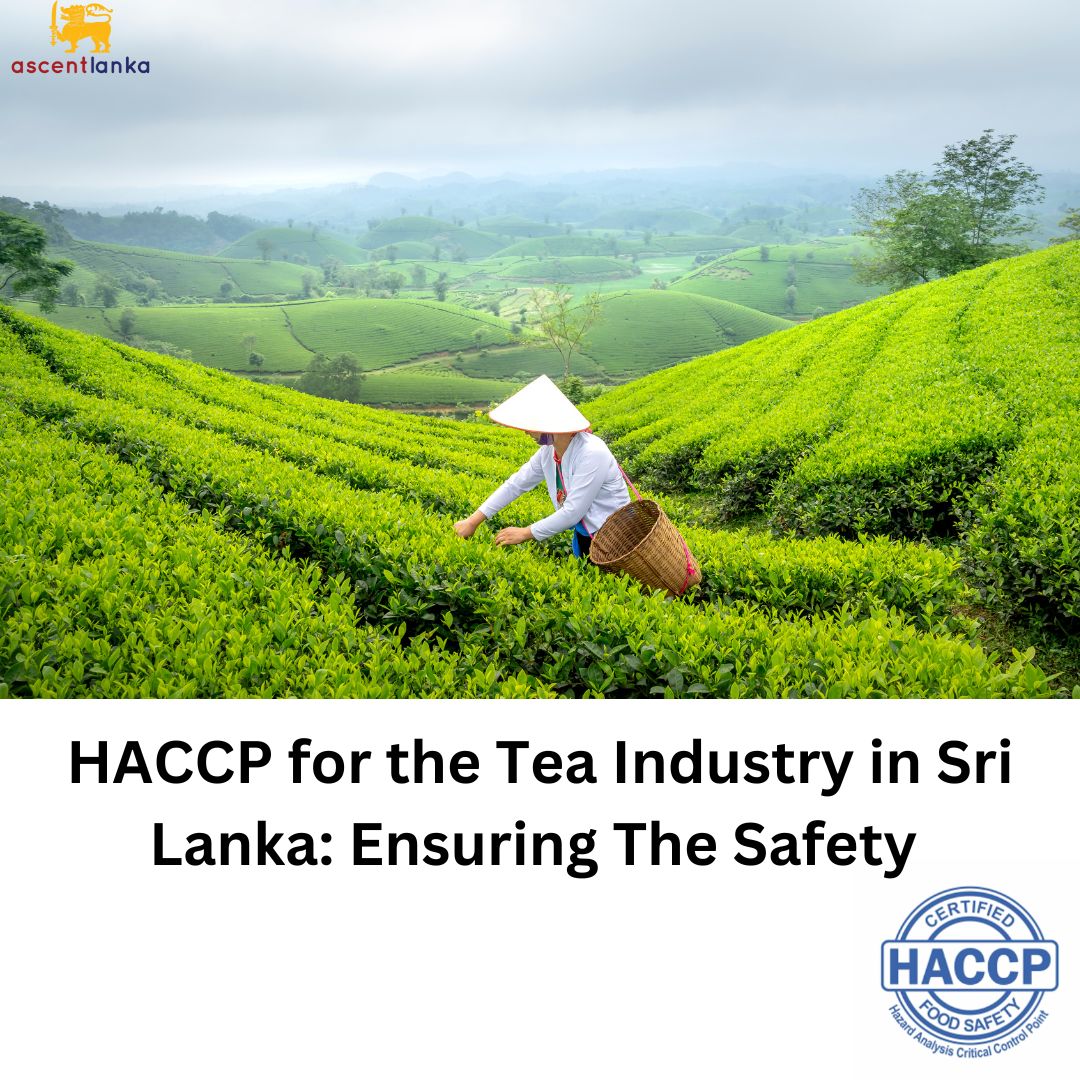
Published: May 22, 2025
HACCP for the Tea Industry in Sri Lanka: Ensuring The Safety
Sri Lanka, known as the "Pearl of the Indian Ocean," has long been synonymous with premium tea. The island nation’s tea industry is globally recognized for its high-quality Ceylon tea, which is exported to over 100 countries. However, in today’s competitive and quality-conscious global market, producing excellent tea is not enough—ensuring its safety is just as crucial.
This is where HACCP (Hazard Analysis and Critical Control Points) plays a pivotal role. HACCP is an internationally recognized food safety system that proactively identifies and controls hazards in food production. For the Sri Lankan tea industry, implementing HACCP is essential not only to maintain product safety but also to meet international regulatory and consumer expectations.
Understanding HACCP in the Context of Tea
HACCP is a preventive approach to food safety that focuses on identifying potential physical, chemical, and biological hazards in the production process and establishing controls at critical points to eliminate or reduce them to safe levels.
In the tea industry, these hazards can arise at various stages—from plucking leaves on the estate to processing, packing, and exporting. Implementing HACCP ensures that every stage of tea production maintains the highest safety standards.
Why HACCP is Important for the Sri Lankan Tea Sector
- → Compliance with International Standards: Many countries require food products, including tea, to come from HACCP-certified facilities.
- → Export Market Access: HACCP certification can be a gateway to entering or maintaining a foothold in premium markets.
- → Consumer Trust: Consumers increasingly seek assurance about the safety and quality of what they consume.
- → Regulatory Preparedness: Aligning with HACCP helps companies meet local and global regulatory requirements more efficiently.
Key Hazards in Tea Processing
- Physical Hazards: Foreign objects like stones, metal pieces, or plastic fragments can enter during harvesting or processing.
- Chemical Hazards:
- → Residual pesticides on tea leaves
- → Contaminants from cleaning agents or lubricants used in machinery
- → Excessive fluoride or heavy metals from soil or water sources
- Biological Hazards:
- → Mold or microbial contamination due to improper drying or storage conditions
- → Presence of pests during packaging or transportation
Implementing HACCP in the Tea Industry: Step-by-Step
- Assemble a HACCP Team: Involve quality assurance, production, maintenance, and management personnel.
- Describe the Product: Define tea type, packaging, shelf life, and intended use.
- Identify the Intended Use: Understand how consumers will use the tea (typically by steeping in boiling water).
- Construct a Process Flow Diagram: Include steps like Plucking, Withering, Rolling, Fermentation, Drying, Grading, Packing, Storage, and Distribution.
- On-site Verification of the Flow Diagram: Ensure the flowchart aligns with real practices.
- Conduct Hazard Analysis: Evaluate hazards at each step and determine control measures. For example:
- → Rolling may introduce metal shavings (physical hazard).
- → Inadequate drying may promote mold growth (biological hazard).
- Determine Critical Control Points (CCPs): Identify points like drying and metal detection that require monitoring.
- Establish Critical Limits: Example:
- → Drying temperature ≥ 80°C
- → Metal detector sensitivity ≥ 1 mm
- Establish Monitoring Procedures: Implement checks such as hourly temperature logs or residue analysis.
- Establish Corrective Actions: Define actions like re-drying or quarantining non-compliant batches.
- Verification Procedures: Use audits, equipment calibration, and lab tests to ensure system effectiveness.
- Documentation and Record-Keeping: Maintain logs for hazard analysis, CCP monitoring, corrective actions, and training.
Benefits of HACCP for Tea Producers in Sri Lanka
- → Enhanced Product Safety: Reduces the risk of recalls, complaints, or health issues.
- → Improved Market Reputation: Builds trust with buyers, distributors, and consumers.
- → Operational Efficiency: Encourages consistent processes, reducing waste and errors.
- → Employee Awareness: Promotes food safety culture across the organization.
- → Smoother Regulatory Inspections: Demonstrates proactive compliance with safety laws.
Challenges in Implementation
While the benefits are significant, some challenges may include:
- → Initial costs for training and system upgrades
- → Resistance to change among employees
- → Maintaining consistent documentation and monitoring
These challenges can be overcome with proper planning, external consultancy support, and management commitment.
Conclusion
For Sri Lanka’s tea industry to maintain its global standing and meet growing safety expectations, adopting HACCP is no longer optional—it is essential. By proactively identifying and controlling potential hazards, tea manufacturers can ensure the safety and quality of every cup of Ceylon tea.
Whether you are a large tea estate, a mid-size packager, or an exporter, integrating HACCP into your operations adds value to your brand and peace of mind to your consumers.


Leave a comment below: